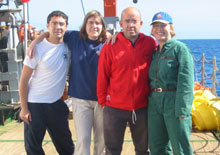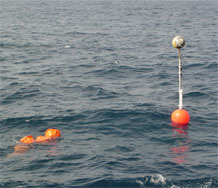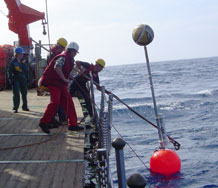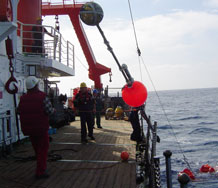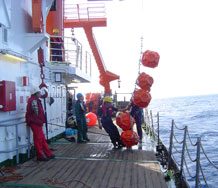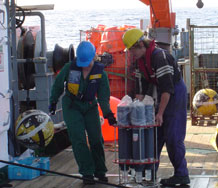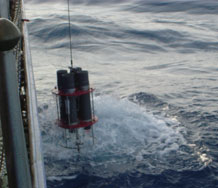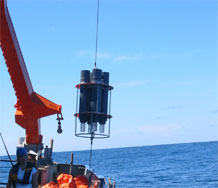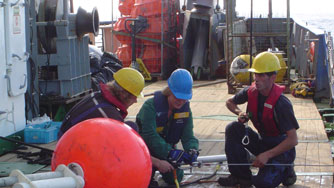
5. Poseidon: Particle Traps
The drifting particle traps are attached to an array suspended from a surface buoy which carries a radar reflector (on top), a flash and an ARGOS satellite transmitter. A set of five glass buoys are the link with the rest of the trap array below and are supposed to dampen the effect of wave movement on the rest of the array. The particle traps hang in 200m, 300m and 500m depth. The main buoyancy sits in 30 m depth and consists of five large glass spheres, protected by a sturdy orange plastic shell attached to a stainless steel chain. When the drifting traps are recovered after 2-3 days of deployment, the first thing to come onboard is the surface buoy. The main buoyancy of the surface buoy is a large inflatable rubber ball with a hole in the center that in addition to a set of three 10 kg weights on its lower end, holds the 10 m long aluminum rod upright in the water column. Before the actual traps can be recovered, the stainless steel wire needs to be detached from the surface buoy and guided over a winch which pulls up the wire on which the three traps are attached. The whole array is weighted down by 80 kg of lead weights attached below the deepest trap. The traps consist of four PVC cylinders which each have four smaller cylinders integrated, and are covered by a baffle to reduce turbulence on the cylinder mouth. Once on deck, the sample bottles below are detached and the samples are processed in the laboratory.
